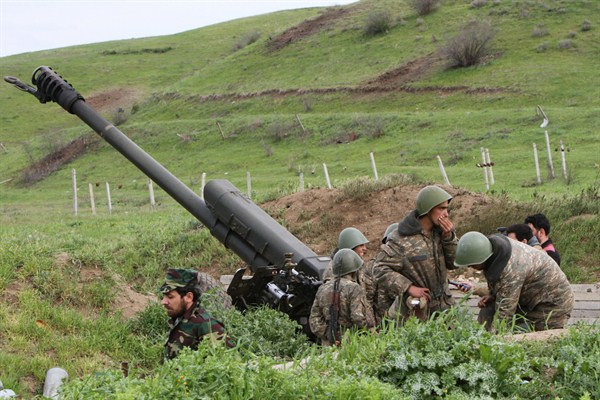The recent bout of intense fighting between Armenia and Azerbaijan along the so-called line of contact near the disputed region of Nagorno-Karabakh should be seen not as an isolated flashpoint, but as the culmination of years of escalating tensions. The regional economic downturn and ongoing tensions between Russia and Turkey only add to the conflict’s volatility.
The four days of fighting in early April between Armenian and Azerbaijani forces was the largest eruption of hostilities since the cease-fire to the Nagorno-Karabakh war in 1994, which left Armenian forces in control of the landlocked mountainous region, as well as much of seven undisputed Azerbaijani regions that constitute the “buffer” territories—Cabrayil, Kelbejer, Qubadli, Lachin, Zengilan, Aghdam and Fuzuli. Total casualty estimates from this month’s hostilities range in the hundreds to the low thousands. Despite a fragile cease-fire, there is a sense that violence could reignite at any point.
The most credible analyses of the hostilities indicate that they were likely initiated by Azerbaijan. A tactical assessment by the website Bellingcat concluded that Azerbaijani forces sought to capture key territory by launching attacks along the northern sectors of the line of contact as an operational feint ahead of incursions along the southern end. However, despite an apparently well-coordinated campaign and presumed conventional military superiority, Azerbaijani forces made only limited headway by the time the fighting had largely concluded.

